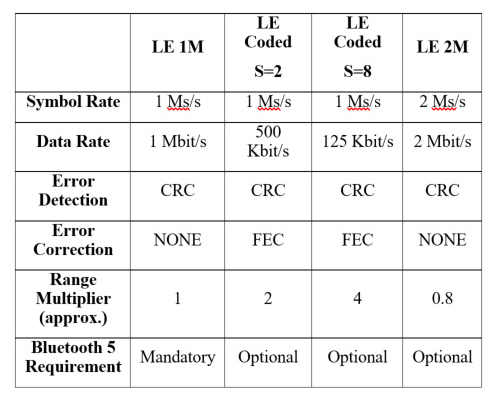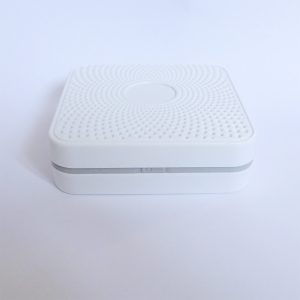We previously wrote about Bluetooth 5 and beacons. Now that more technical articles are available, we have been looking deeper into Bluetooth 5 and and how it might affect beacons, particularly in terms of compatibility and battery life.
Bluetooth 5 achieves a greater range without necessarily using more battery power. How? There’s an informative article by Martin Woolley that explains how range is more to do with how far the radio signal reaches and is still intelligible as opposed to how far the signal reaches. With current Bluetooth 4, the signal is actually going further than the working range but there’s noise in the signal such that the data can’t be reliably read. Bluetooth 5 (optionally) adds extra information to the data to allow error correction to be performed. This allows the data to be intelligible at a longer range. There are various PHY ‘modes’ that Bluetooth 5 can use with different capabilities:

LE 1M is what we have at the moment and will provide backward compatibility. The new LE Coded modes add error correction at the expense of a lower data rate. The LE 2M provides twice the data rate but actually less range than with Bluetooth 4. It can be seen that the ‘headline’ of Bluetooth x4 range and x2 speed are mutually exclusive. Bluetooth 5 is better than Bluetooth 4 but you can’t have everything. Bluetooth implementations will need to choose whether range, or speed is important. As beacons transmit very little data and speed of that data isn’t that important, we expect new beacons to use the coded PHY modes.
However, what about compatibility? If beacons need to remain backward compatible with current Bluetooth 4 phones then they will need to transmit LE 1M. There will be a tradeoff between long range needs and compatibility with today’s phones. Some beacons might do timeslicing between long range Coded and LE 1M advertising with a consequent significant degradation of battery life.
Another aspect that will affect battery use is that Bluetooth 5 allows a maximum transmit power +20dBm rather than +10dBm as at present. However, as now, higher output power will be under user (initial configuration) control.
In terms of using the new, larger Bluetooth advertising data size, this will need the iBeacon and Eddystone specifications to evolve. This is reliant on work by Apple and Google. Larger data sizes imply longer transmission time, about x2 to x8 the current transmission time. Most current beacons transmit for about 1ms (1 millisecond) every 100ms to 1000ms. New beacons will transmit between 2ms and 8ms again every 100ms to 1000ms. The transmission time has a direct, almost linear, affect on battery use.
[As an aside, if a beacon uses use LE 2M, without the longer range, then the transmission time will be cut by about a half. As most beacons are expected to support the longer range, in most cases there’s going to be a corresponding increase in battery use.]
It can be seen that for ‘Beacons 2.0’, compromises will have to be made. There are tradeoffs between long range, high speed, legacy (today’s) phone compatibility and efficient battery use that mean no beacon will have all these desirable attributes. There’s likely to be an even larger range of beacons and/or configuration parameters that tradeoff range, speed, compatibility and battery life. This is likely to complicate evaluation and rollouts.
